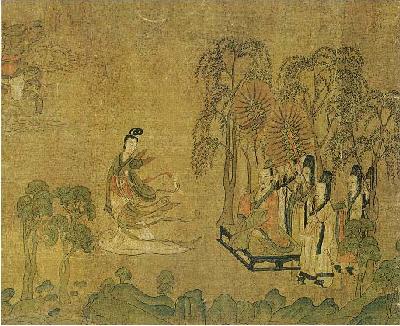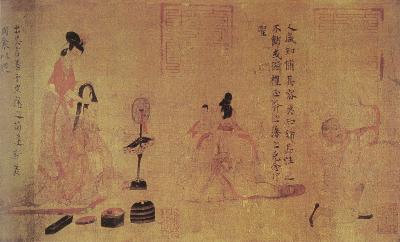| Art Q&A > Painting |
|
|
Gu Kaizhi -- Originator of Painting
Gu was born into an official family in Wuxi, Jiangsu Province and served as a government officer at a young age. Having toured many beautiful places, Gu was proficient in writing poetry and essays; Chinese art history abounds in anecdotes about him.
The young man who paid great attention to the details that revealed the characteristics of his subjects was none other than Gu Kaizhi. Gu was once was asked to paint Pei Kai's portrait, a man with three, long, fine hairs on his face that had been ignored by other painters. Gu laid great emphasis on the three hairs, and Pei was very satisfied. Another time, Gu painted a man named Xie Kun standing in the midst of mountains and rocks. When asked the reason for the setting, Gu explained that Xie loved to travel and see beautiful mountains and rivers. Such stories demonstrate Gu's skill of creating atmospheres that enhanced the characteristics of his subjects. The theme of the Luoshen Appraisal Painting (luo shen fu) was drawn from the article, Luoshen Appraisal, written by Cao Zhi, son of the Wei Emperor Cao Cao. The painting depicts the meeting between Cao Zhi and the Goddess Luoshen at Luoshui River, vividly capturing the mood of their first meeting and eventual separation. Gu emphasized his subjects' expressions, with the stones, mountains and trees having an ornamental purpose. Gu's paintings, which greatly influenced later traditional Chinese paintings, are similar in style to the Dunhuang murals. Gu also made great advances in summarizing painting theories. His theoretical works included Painting Thesis and Notes on Painting Yuntai Mountain. Gu paid considerable attention to the vivid expressions of his subjects to expose their spirit. His Graphic Theory later became a basic theory for traditional Chinese painting. According to historical records, Gu created more than 70 paintings based on historical stories, Buddha, human figures, birds, animals, mountains and rivers. His three existing scroll paintings include the Nvshi Zhen Painting, Luoshen Appraisal Painting and Lienv Renzhi Painting -- the earliest examples of scroll paintings. |
||||||
All rights reserved. Reproduction of text for non-commercial purposes is permitted provided that both the source and author are acknowledged and a notifying email is sent to us. |
||||||
 |

